
“That's where we sacrifice the goats,” deadpans a man who looks to be in his late 20s as he points to an altar in the middle of the Orange Grove Masonic Lodge No. 293's main room. A large, multicolored star adorns the two-story-high ceiling. The impressive hall used to be the Campbell Opera House: A few rows of theater-style seats line the rectangular space, with a stage in one end zone and a throne-like chair in the center of the other.
A handful of guys laugh. “It's mostly just used to hold a big book or two,” another young Master Mason chimes in, referring to his group's tradition of having a holy text on the altar during their functions. And that's about the most exciting thing that happens here. In a few hours, the same room will fill with men, women and children of all ages for the lodge's monthly general meeting. Worshipful Master Dennis Rootes, the group's leader, will lead the proceedings, with a mural of the orange groves that used to surround the area painted on the wall behind him. The Master Masons (members who have completed at least three degrees) will wear small embroidered white aprons that signify purity, truth, sincerity, honesty and a whole bunch of other moralistic do-goodery.
]
At the beginning of the tour, only one Mason was present: Orange Grove's Senior Warden, Mike Selix, the second in command around here. As Selix worked his way through each room of the historic building, other Masons joined in, eager to show off their favorite areas and explain the ornate symbolism dotting the dining room, offices, foyer, hallways and lodge room. They're almost tripping over one another to regale a newcomer with the glory of their cause: Freemasonry, the infamous fraternal order that counts in its ranks 14 American presidents, numerous world leaders, countless captains of industry and masters of the universe–and a group that was, until recently, in danger of dying.
But here, near the center of Orange's Old Towne Plaza, there's no doom and gloom. “You want to know what the big 'G' above the stage stands for?” Rootes asks in a sotto tone. Someone's calling for him, though, so he walks off and nonchalantly reveals the secret teachings of all ages. “It stands for God and geometry. It's not a secret.”
Everyone in the room has heard about the Freemasons from their grandparents, Netflix documentaries and Dan Brown books: initiation rites, world dominance, Illuminati, Knights Templars, and so many other rumors and allegations that Masons are nowadays treated more as a punch line than a menace. Once a powerful presence in Orange County, with majestic buildings in Anaheim, Huntington Beach, Orange, Santa Ana and other cities, the group has seen membership fall precipitously, leading to an aging membership reduced to planning its own funeral.
Now, OC Freemasonry is finding salvation from an unlikely source: millennials. Local chapters have seen an upswing in membership over the past couple of years, nearly all young men interested in belonging to a greater cause. “Generations have four archetypes,” says Marshall Tipton, who served as the Worshipful Master in 2014. “The Greatest Generation was very interested [in Masonry], then it kind of skipped over the baby boomers and Generation X, and now the millennials are most like the Greatest Generation. If you ask around a lodge if anyone has had Masons in their family, 90 percent who have will tell you it was their grandfather. Rarely is it a father.”
Older Masons are delighted by this development. “It's all about giving back to the community and connecting to something bigger than yourself,” says Selix, 52. “Every lodge has different focuses in the community. We used to just work with public schools and do some appreciation nights, but now we're trying to reach out as much as possible.”
[
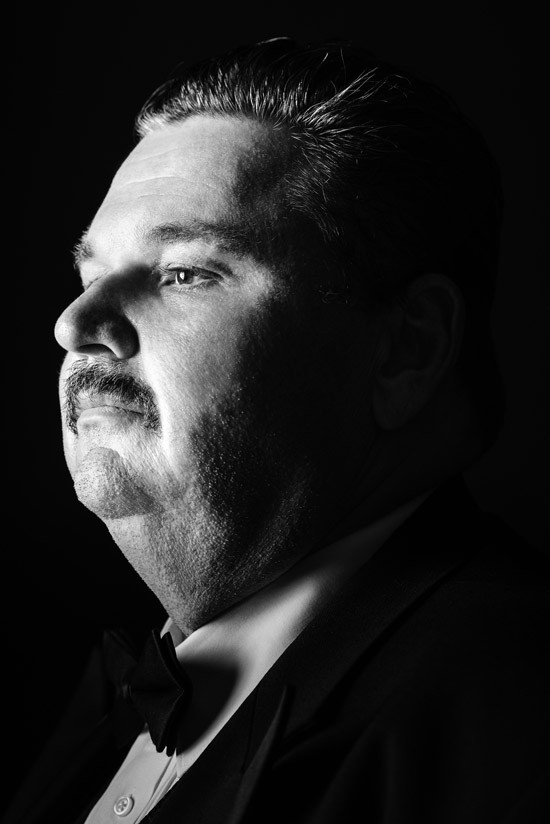
As Rootes takes to his chair in the center of the stage, the most important American Masonic rite of all begins: the Pledge of Allegiance. Masons–all donning dark suits and aprons–fill the seats on one side, family members and guests on the other. Nonmembers will be ushered into the dining room while the Masons do their secret rites. The Junior Warden–third in command–sits alone between the two sides.
About halfway through the Pledge, a toddler begins to wander into the center of the room. His panicked mother gets up to chase after the little boy. After the toddler takes a few more rapid, stumbling steps, similar to those of a streaker at a college football game, the embarrassed mom finally catches up, picking her son up by his armpits and carrying him back to her seat.
But the kid won't have it, launching into a tantrum. A Masonic wife gives an update on a fund-raiser for the Shriners Hospital between his screams. Someone else mentions that the uniforms for the Order of DeMolay, the group for young men between 12 and 21, are being repaired. The kid begins to bawl. As Selix reminds everyone that a few of the older members are unable to attend the lodge meetings because of failing health and should be kept in everyone's prayers, the kid commences shrieking. His mother frantically digs through her purse to find something to shut her baby up.
Some of the older Masons look on in dismay as she finally decides to carry her crying kid out of the room, but most of the younger Masons don't seem to mind. They're used to it. “What's accepted today wouldn't have been accepted even five years ago,” says Frankie Rosario. “During meetings, it used to be just Masons in the lodge, and everyone else was in the dining room. Now everyone can go in for a lot of it because a lot of the Masons want their wives and kids to see what they do.”
Rosario isn't exactly a young Mason (he joined five years ago, when he was in his late 40s), but he's not among the old guard either. That puts him in the position of seeing how and why Masonry needs to catch up with the times if it wants to draw younger people and thus survive. Rosario applauds the younger generation for fundamentally changing how Freemasons are managing themselves. “Kids want to have closer interactions, and it doesn't stop when you leave the lodge,” Rosario says. “In the old days, you had to be at the lodge to learn and assist and manage things; kids want the ability to stay connected all the time now.”
Very slowly, the organization is learning to keep up with what the young Masons want. Lodge websites have improved dramatically over the past few years, and social media accounts and groups dedicated to Masonry are commonplace. There's even an app for finding Masonic lodges in different cities and countries. All that's missing is a Masonic dating site.
One of the newcomers is 36-year-old Luke Wessman. He's best-known as a tattoo artist from reality TV shows Miami Ink and NY Ink, but he's also a Master Mason who makes the drive down to his home base, Vista Masonic Lodge No. 687. “For me, it's really nice when you bump into a brother Mason anywhere around the world, and you're immediately welcomed like a close friend,” he says while working in his secret OC studio, the Summertown Inn. “But I also enjoy the fellowship with my elders. After the meetings, we have meals, and I love being able to sit down and just kind of chop it up with them and get some of that old knowledge, whether it be worldly or just common knowledge.”
Unlike many of the new-wave Masons who are introduced by relatives, San Diego tattooer Dave Gibson was responsible for bringing Wessman into the fold. Wessman initially pursued it because of how much it meant to his mentor, but its emphasis on introspection gave him a much-needed compass for life. “It's not as much as you may think about getting into a crew or a group and learning the secrets of the world,” Wessman says. “It's about learning how to unlock the secrets within yourself.”
Wessman rose from Entered Apprentice (newbie) to Fellowcraft (second stage) to Master Mason relatively quickly, but his activity slowed as his stature as a tattoo artist grew. His hectic lifestyle doesn't allow Wessman to participate as much as he'd like, and he understands that some of the veterans might not appreciate that. “I think the older members, they get bummed when they don't see me for, like, six months because I've been traveling and doing all this stuff,” he says. “I think it's probably a new era in which it's harder to be committed and devoted to a lodge because you're doing so much in the modern world, but I think I can still represent Masonry out and about in the world.”
[
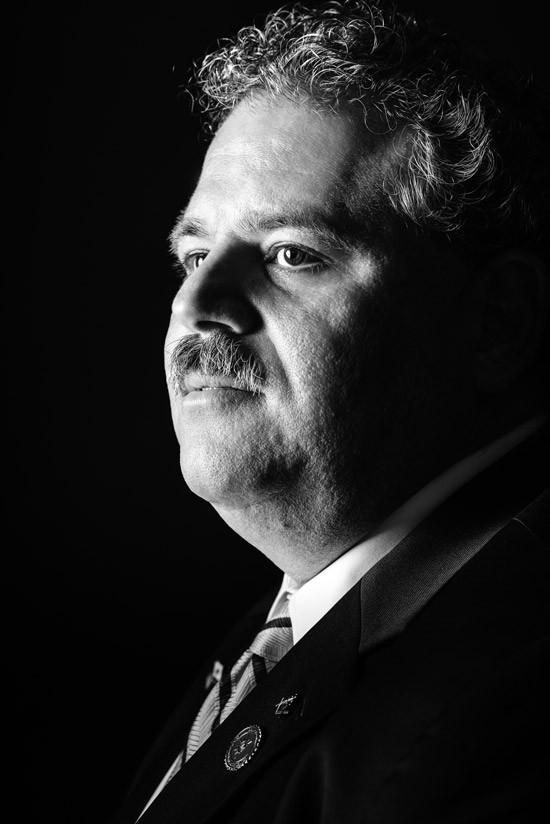
Freemasonry officially came to Orange County in 1870, with the founding of Anaheim Lodge No. 207 (which still exists). Chapters popped up in Santa Ana, Orange, Tustin, Brea, Garden Grove and Huntington Beach over the next few decades. Dozens of OC pioneers were members, from former District Attorney Horace C. Head to orange growers, mayors and more.
But by the 1980s, and especially in the 1990s, Masonry began fading from the landscape.
“There was a definite decrease as the Greatest Generation was passing on,” says Ray Godeke, past Master of the Anaheim Lodge, past Personal Representative for the OC Scottish Rite Valley, and executive vice president and secretary for the California Scottish Rite Foundation. “There was no resurgence of veterans returning from the Iraq War like there was after World War II. It was more difficult for younger guys to come out if there wasn't something exciting going on.”
When Godeke was leading the Anaheim Lodge in the late 1980s and early 1990s, about 60 people attended each meeting. By the late '90s, that number dropped into the 30s. No new faces were coming in, and meetings became “just reading minutes from the last meeting and paying bills,” which proved dull even for the most devoted members.
During the decline, some smaller lodges consolidated, leaving areas without a Masonic presence. Other lodges had to “retread,” or reuse the same Worshipful Masters who had just held the office a few years prior. In 1985, the most recognizable Masonic building in Orange County, the four-story Art Deco-style Santa Ana Masonic Temple, was boarded up and abandoned. (It's now the Orange County headquarters for Scientology.)
But throughout their freefall, Freemasons continued to focus on two things: community service and “making good men better,” as they like to say. That commitment eventually began drawing in a new generation. Richard Wood, an “old-timer” and the current OC Scottish Rite Valley Deputy Personal Representative, says he's noticed a recent influx of Masons in their early to mid-20s in the Scottish Rite branch. Not only are they attending the meetings, but they're also far more into the cause than some of the older members. “Back when I went in, guys were older, and they just mumbled a lot,” Wood says. “Now, kids are memorizing degrees. These young guys really get after it. They're paying $400 to $600 for kilts. They love getting dressed up for this stuff, and they're really excited for the degrees.”
“It's actually refreshing,” Godeke adds. “The challenge is for us old-timers to listen to the needs of the younger guys. They're truly reviving Masonry.”
One of those newbies was Tipton. The 34-year-old Anaheim resident rose through the ranks fast, spending only a few weeks as a “sideliner” (the nickname Masonic officers give to non-officers). Tipton's initial interest came from his “gruff and quiet” grandfather suddenly opening up when asked about Masonry, telling his young grandson about how great his fellow Masons were and that it's “a lifelong journey of enlightenment and personal discovery.”
For Tipton, who moved to OC from Northern California to attend Chapman University,
Masonry offered not only enlightenment and self-improvement, but also the chance to learn from men he looked up to.
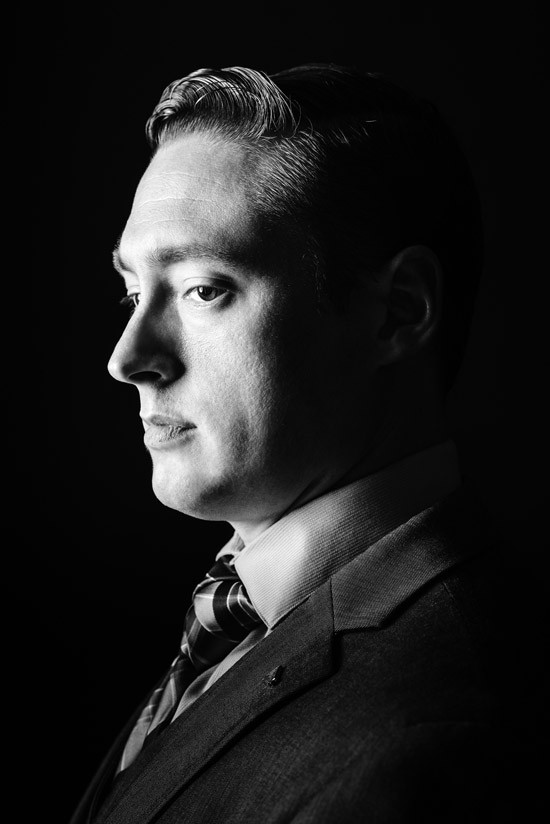
“I wouldn't call myself a ladies' man by any means, but I had mostly female friends before I became a Mason,” Tipton says. “I became a Mason around the same time I became a home brewer, so I started meeting a lot of really good guys then. It's funny to see how the two groups intersect sometimes. I'll catch my home-brewing friends giving advice to other Masons sometimes.”
And that's ultimately what Tipton's generation of Masons seeks: friendship beyond networking and superficiality. He occasionally goes to lunch with Rootes, giving the current Worshipful Master advice and helping him however he can. Three brothers were in his wedding, including as his best man, and he's looking to get a group of Masons together to go cycling on a 13-mile loop that has a handful of craft breweries along the way.
Tipton believes the misconception about Freemasonry comes from people not understanding what is at its core. The organization's desire for privacy often overshadows the work they do.
“We deliberately try to not toot our own horn,” Tipton says, mentioning that Masons aren't even allowed to openly recruit, the thinking being that only those who truly want to join will pursue and ask. “We don't want men seeing a banner ad on Google and writing us off as some sort of old boy's club or social group. We want them to see a man first, get to know the man, realize that man is good, feel the desire to be more like him, then learn that the man is a Mason and that Freemasonry is what made him who he is.”
But it isn't just a boy's club for Tipton. While it remains a males-only group, its longtime female corollary, Order of the Eastern Star, is also experiencing an uptick in membership.
During meetings, the men handle their business while the women have their own meeting; once their secret proceedings are done, everyone hangs out.
Tipton's wife, Christa, happened to already be involved in Masonry before the two met. “As a teenager, I was brought into the Rainbow Girls, and then I joined Job's Daughters as well,” Tipton's wife says, referring to the Masonic groups for girls. “I spent a lot of time around Masons when I was younger, and I looked up to them as father figures. I always found Masons to be respectful, and that's what I learned to expect from gentlemen, so I married one.”
Orange Grove Lodge has become as important for Christa as it has for her husband. It's not just about service for her; it's also about the connections she's made with the other wives both young and old. And it certainly didn't hurt Tipton's time as an officer to have Christa in his corner. “I knew it wasn't easy leading the organization, so during his year [as Worshipful Master], I gave him advice and never questioned his loyalty and dedication to the lodge,” Christa says. “I think it's easier for him to have someone to rely on during times like that.”
[
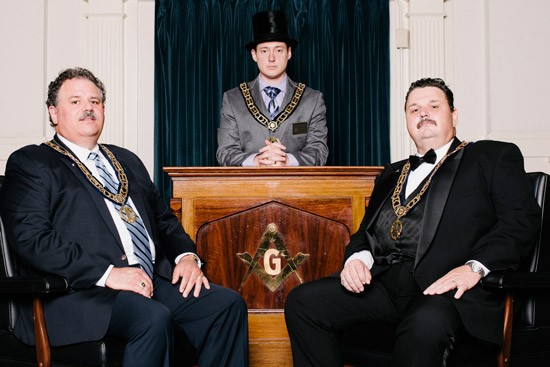
“He's asking about the younger kids, Ray–you're an old man now,” Wood says through a smirk. He, Godeke, Rosario and a few other veteran Masons sit around a wooden table in the meeting room of the Orange County Childhood Language Center in Santa Ana.
“Well, you're not getting any younger yourself,” shoots back Godeke.
The ball-busting has gone on like this for the past two hours; it's something only brothers could truly understand. “I'm going in for open-heart surgery soon,” Wood says. “I know these guys will take care of everything at my house while I'm gone. It's one less thing I have to think about.”
One of the top Masonic priorities is taking care of their elders. Masons are Masons until they die, so the responsibility to assist the older members falls on the younger ones. For those in their 40s and 50s with families of their own, this can require time and energy that they may not have, but the millennials have come through in a big way–not just saving the fraternity, but also saving their own.
“I don't know the reasons why, but the new generation is seeking what our parents had,” Rosario says. “A lot of people in our generation are so involved in financial records; they're concentrating on financial gains and how to get there faster. The younger generation is understanding that being a better person and helping others is important. They value the quality of life more than financial gains.”
Later on, back at the Orange Grove Lodge dining hall, members sit down for a Mexican meal. The hall is packed with Masons, their families and a few Masonic hopefuls. Among the crowd is Brandon Cook, the young Worshipful Master of the Anaheim Lodge. A few seats over, a Mason in his mid-20s checks his phone for the score of the Ducks' playoff game.
As a plate full of enchiladas, rice and beans is set in front of him, Tipton turns to the prospective Mason to his right to go over some commonly used English phrases that have their roots in the Masonic tradition. “'On the level,' that's one,” Tipton says between bites. “Also 'giving him the third degree.' There's a lot of them.”
All things change with time, as the Masons are learning. “There will always be something to keep in the uniforms and traditions, the process of getting degrees–that should still be given the respect it deserves,” Rosario says. “But other things will change. Members who are younger used to feel like they didn't know as much as the older guys. Now the younger generation is coming through and ripping it.”
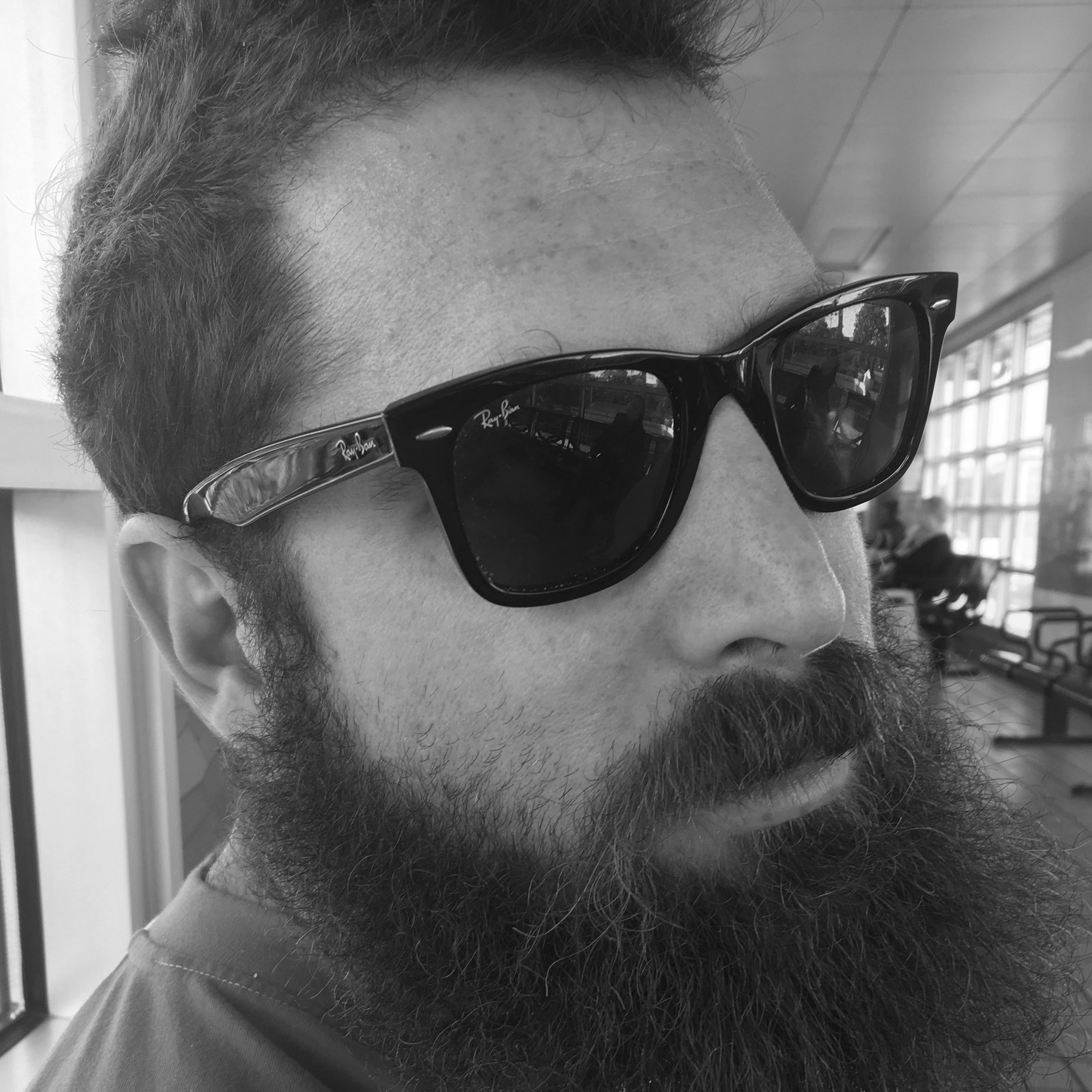
Josh Chesler used to play baseball for some pretty cool teams, but now he just writes about awesome stuff like tattoos, music, MMA and sneakers. He enjoys injuring himself by skateboarding, training for fights, and playing musical instruments in his off time.

